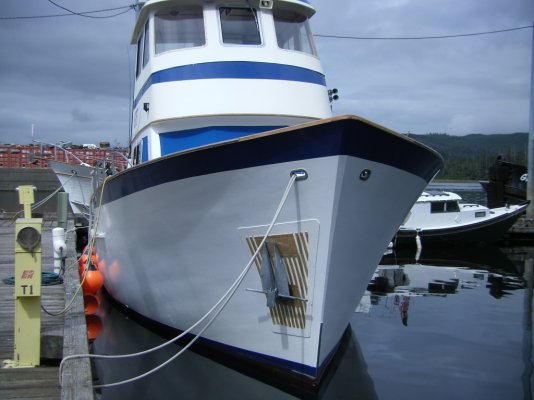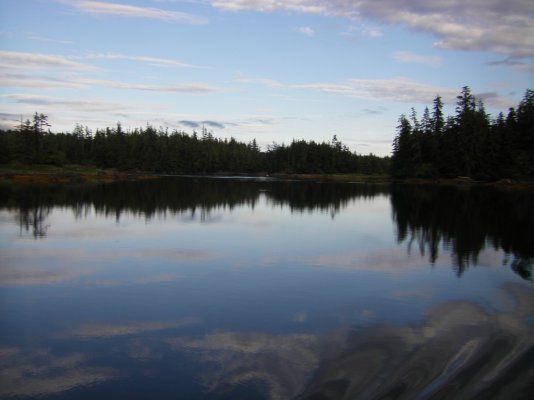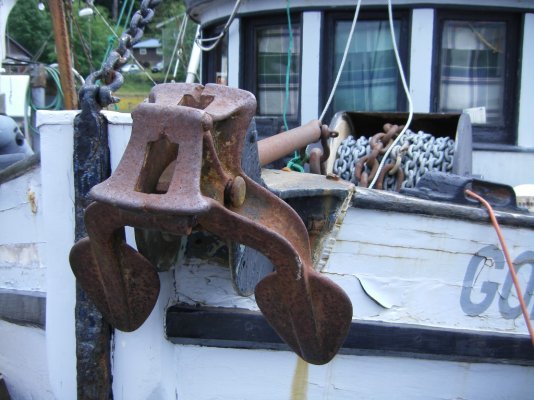Nomad Willy
Guru
Update,I anchored twice on my way to Craig.
1st night.
I tried another experiment w the XYZ * *..failed to set. I have one more experiment coming up. I used the Manson Supreme w 10' of 3/8 chain (heavy for my boat). The set was mushy and inconclusive in 70' of water w 200' of rode out (3-1). I'm developing a dislike for anchors that work (or for me mostly don't work) on their side. I went w it for the night.
2nd night.
Anchored in a huge anchorage in 20' of water. I was fed up w all my other anchors so just let go w the old Danforth and the 10' of 3/8 chain. It was to blow a bit that night so I set the anchor hard from the stern at half throttle in fwd gear. She rode fine of course but in the morning I pulled the anchor up w a considerable effort (needed a verticle rode and more than a bit of reverse gear) and got the smellyist, ugliest black and stickeyist black and smellyist mud I have ever seen. Took almost 1/2 hour to clean the anchor up sufficiently to bring it aboard. Later in the day the smell was still strong and I realized I had a small blob of the "stuff" on my shirt. So much for the perfect anchorage.
-- Edited by nomadwilly on Wednesday 4th of August 2010 12:05:13 AM
1st night.
I tried another experiment w the XYZ * *..failed to set. I have one more experiment coming up. I used the Manson Supreme w 10' of 3/8 chain (heavy for my boat). The set was mushy and inconclusive in 70' of water w 200' of rode out (3-1). I'm developing a dislike for anchors that work (or for me mostly don't work) on their side. I went w it for the night.
2nd night.
Anchored in a huge anchorage in 20' of water. I was fed up w all my other anchors so just let go w the old Danforth and the 10' of 3/8 chain. It was to blow a bit that night so I set the anchor hard from the stern at half throttle in fwd gear. She rode fine of course but in the morning I pulled the anchor up w a considerable effort (needed a verticle rode and more than a bit of reverse gear) and got the smellyist, ugliest black and stickeyist black and smellyist mud I have ever seen. Took almost 1/2 hour to clean the anchor up sufficiently to bring it aboard. Later in the day the smell was still strong and I realized I had a small blob of the "stuff" on my shirt. So much for the perfect anchorage.
-- Edited by nomadwilly on Wednesday 4th of August 2010 12:05:13 AM



